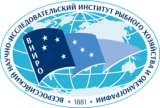QR-код документа
Article
L29
Lapina, N.M.
Biochemical Monitoring of the Russian Arctic Seas under the Climate Change [Электронный ресурс] / Lapina, N.M., Torgunova, N.I., Agatova, A.I. // Modern methods for assessing the biological productivity of waters in industrial areas of the World ocean: VNIRO proceedings. - M.: VNIRO Publishing, 2014. - V. 152. - P. 101-117. - 2014
Рубрики: Biochemistry
Monitoring
Climate
Hydrobionts
Ecosystems
Calculations
Аннотация: Quantities and biochemical composition of dissolved and particulate organic matter (OM) as well as rates of the OM transformation in the Russian Arctic seas are analyzed. There is a significant variability in the OM concentrations with the maximum concentrations of dissolved and particulate OM in the White and Kara seas, while the minimum ones were observed in the East-Siberian Sea. Rates of the OM oxidation were maximum in various frontal zones formed with water masses of different origin as well as the seasonal ice melting. It is shown that despite low temperatures in the Arctic marine ecosystems, there is an intensive transformation of both autochthonous, and allochthonous OM, because local phsycrophils expend low activation energies on oxidation and hydrolytic splitting of OM. In the Arctic seas, the main biochemical components of the dissolved OM are carbohydrates and lipids, while proteins and carbohydrates dominate in the particulate OM.
Доп.точки доступа:
Torgunova, N.I.
Agatova, A.I.
